You might know me as @suburbanbeatnik. This is my blog for pop culture and meme nonsense or anything else I find remotely interesting.
Last active 60 minutes ago
Don't wanna be here? Send us removal request.
Text
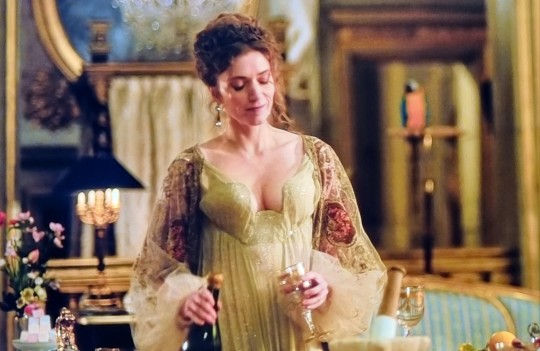

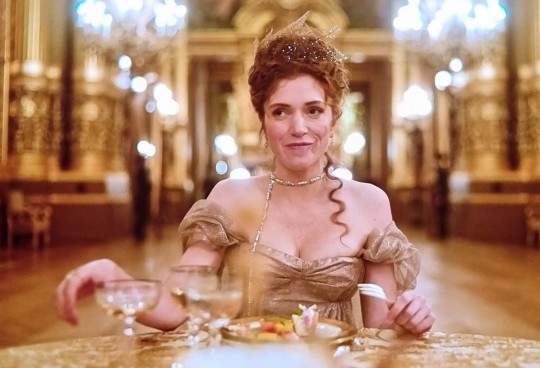

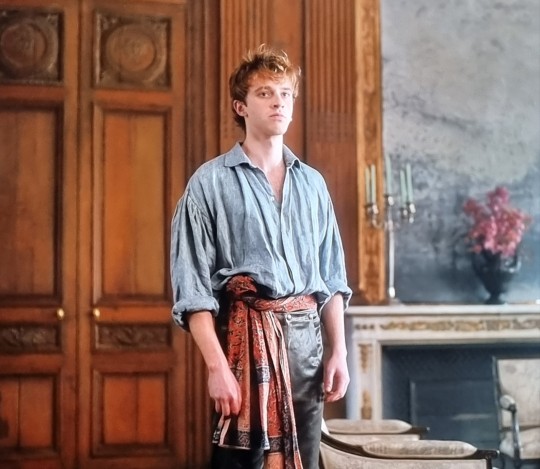

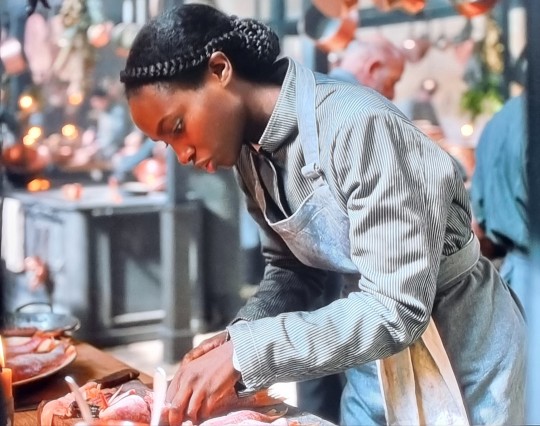
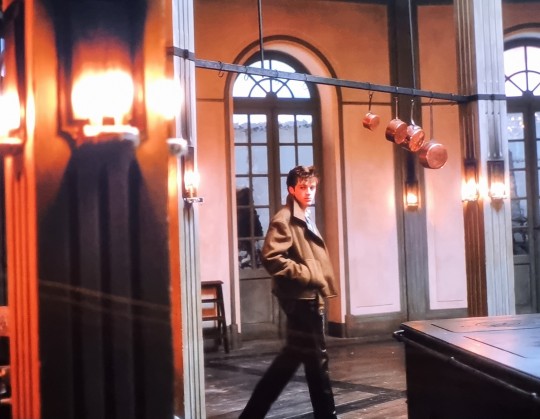
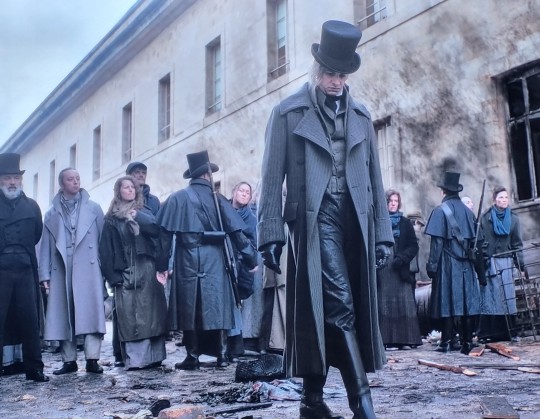
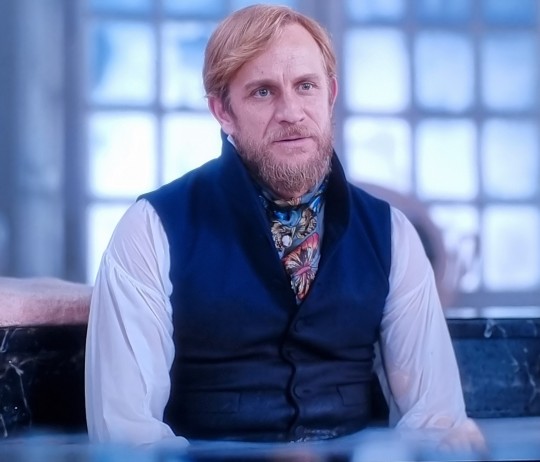
a few of you asked, so here are some photos taken with my camera (sorry for the quality), from the first two episodes of apple tv carême featuring: blonde tits out milf josephine, bearded horsegirl talleyrand, fuckboi art student and part time pirate carême, modern kitchen uniforms, the british ambassador's fashion forward hair, fouche playing javert, and talleyrand sitting in the bath wearing a terrible ascot tie.
17 notes
·
View notes
Text
oh good lord. so an author I followed on ig posted some ai swill and talked about her 'art' and her 'vision' and how it took her THREE HOURS to get it right. it looks so bad. jfc
6 notes
·
View notes
Photo

Posted by Steven Payne to Facebook group British Medieval History:
People in the Middle Ages valued sweet smelling breath and bodies, seeing them as desirable, so there is a great deal of evidence from the period of tooth pastes, powders and deodorants. Contrary to the typical Hollywood depiction of medieval peasants with blackened and rotting teeth, the average person had teeth which were in fairly good condition, mainly due to the rarity of sugar in the diet. Most medieval people could not afford sugar and those who could used it sparingly. Archaeological data shows that only 20% of teeth had signs of decay, as opposed to 90% in the early twentieth century. The main dental problem for medieval people was not decay but wear, due to a high content of grit in the main staple, bread. For deodorants, soap was available for the wealthy, but a variety of herbs and other preparations were also used. Soapwort is a plant native to Europe and Asia which, when soaked in water, produces an effective liquid soap. Mint, cloves and thyme were also extensively used by simply rubbing into the skin, and alum (hydrated potassium aluminium sulphate) was an effective deodorant. I am trying to keep to 14th century technology on my pilgrimage to Canterbury, which gives me various options when looking at hygiene. In the middle ages people generally cleaned their teeth by rubbing them and their gums with a rough linen cloth, or the chewed end of a stick. There are various recipes for pastes and powders that could be put on the cloth to help clean the teeth, but I have chosen simple salt to whiten them and to aid fresh breath. I will also be using the stick method, and will be taking along a supply of liquorice root sticks for that purpose. I also have a few blocks of alum, which when rubbed into wet skin has a deodorising effect. Alum, like beeswax, was used extensively in the middle ages for a variety of purposes, also being useful: * in the purification of drinking water as a flocculant * as a styptic to stop bleeding from minor cuts * as a pickling agent to help keep pickles crisp * as a flame retardant * as an ingredient in modelling clay * as an ingredient in cosmetics and skin whiteners * as an ingredient in some brands of toothpaste The photograph shows my wash kit including home made olive oil soap, salt for the teeth, a block of deodorising alum, cloves, a boxwood comb made for me by Peter Crossman of Crossman Crafts and some liquorice root sticks, all on a woollen ‘towel’. Note that the cloves are kept in a ventilated box….this is because insects hate the smell of cloves and so a perforated box will keep them out of my kit and food bag when I am sleeping rough. TIP: If you steep some cloves to obtain the oil and put the liquid around the doors and windows of your house, it keeps spiders and insects out.
49K notes
·
View notes
Note
This is a good summary, I think!
I have the sneaking suspicion that Napolron wanted to bang his male friends but just didn't know how to initiate. Perhaps a fear of rejection or the awkward.
I think he had homo-something urges, if he lived today he might identify in some capacity as bisexual
but why he didn’t was that I don’t think he fundamentally saw himself as a man who did sexual activity with other men
There were a lot of cultural hangups around queerness in men - particularly around effeminacy and perceived weakness. Napoleon had his moments of tolerance towards sodomy and moments of harshness. Regardless his own possible desires, they would have been repressed and ignored and sublimated into other areas of his life.
He was also someone who had passionate and intense friendships with men that were just friendships - no queerness to them in That Sense. And that’s an important thing to carve out as separate from whatever else he had going on
So while I think he was a man who could have been potentially sexually attracted to men alongside women he was too bound up in his cultural hang ups and repressions and baggage to even begin to be aware that this was a thing he experienced. He just told Culaincourt that he had weird butterflies in his stomach when he saw handsome men in uniforms and was like “you get that too right? It’s a normal thing” to which Coulaincourt said “…..sure, sire. whatever you say”
52 notes
·
View notes
Text
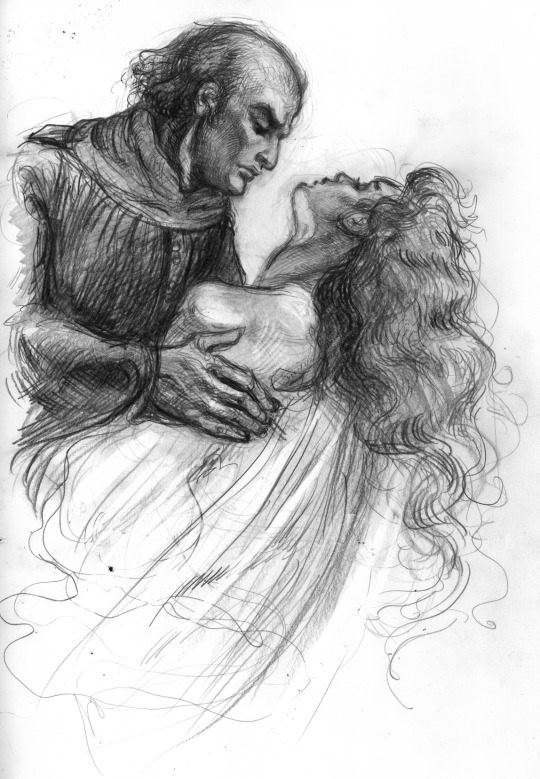
Since I've read Notre Dame de Paris aka Hunchback of Notre Dame, the characters have been dancing in my head like extras in a 1980s music video. The book was surprisingly bodice-rippery (Esmeralda's bodice is actually ripped at one point, exposing her heaving bosoms), so here, have a book canon Frollo and Esmeralda, in the style of a 1970s/80s romance cover. (@silver-whistle assisted in helping making sure the cassock was historically accurate)
Anyway, I'm fighting to get out of this art block, so expect more NDdP/HoND characters coming your way.
#illustration#art#sketchbook#sketch#dom claude frollo#claude frollo#esmeralda#frollo#notre dame de paris#hunchback of notre dame
90 notes
·
View notes
Note
Indeed, ACO is streets above any other ancient Greek media that's been put out over the past 20 years, but to be fair, that's a verrrrry low bar.
However, I just remembered a huge anachronism in the game. The cheval de frise. SO MANY GODDAMN CHEVAUX DE FRISE!


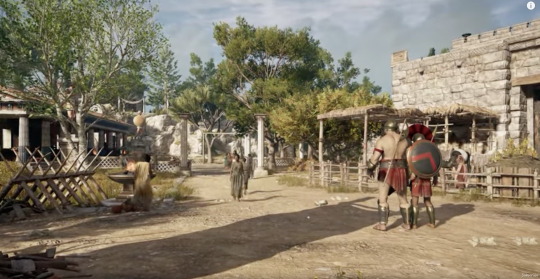
The humble cheval de frise was invented in ancient China, but didn't become common in the west until medieval times, which is a good 1500+ years after the time period depicted in ACO. I'm not sure what medieval chevaux de frise looked like, but the ones in ACO look a lot like the chevaux built during the American Civil War.
Lately I've been getting into AC Odyssey. It looks pretty cool, but I wonder, exactly how accurate is it to what ancient Greece actually looked like?
I enjoyed playing this game too and i will say they did a phenomenal job on this!
What’s accurate:
Architecture: Cities like Athens and Sparta are impressively detailed. The Acropolis, temples, agoras, and even street vendors reflect archaeological knowledge. Some temples and statues are reconstructed based on historical sources and ruins.
Clothing and armour: While a bit stylized, tunics, chitons, and some armor sets are reasonably based on historical designs. Hoplite shields and helmets especially are quite accurate.
You meet historical figures like Sokrates, Alkibiades, Herodotos, etc. their dialogues may be a little exaggerated for plot reasons but you can still make good conversations with them
Greece’s geography, from islands to mountains, olive trees to goats, feels authentic. It captures the natural beauty well. (Could feel the heat and the crickets while playing 😂) i personally liked exploring the ancient Minoan ruins in Crete.
What’s less accurate:
Mythology and monsters: You fight Medusa, Cyclops, and other mythical beings, cool, but clearly fictionalized. These are treated more as hidden “Isu” lore, but still far from historical.
Time period: The game is set during the Peloponnesian War (431–404 BCE), but it sometimes mixes elements from later periods (e.g., some fashion or weaponry).
Role of women: Kassandra is amazing, and women *did* have influence in certain religious and social roles, but a female mercenary like her would've been rare and frowned upon in most Greek poleis.
Technology and combat : The RPG elements and fighting styles are more modern game design than ancient tactics, though the use of the spear and shield (in certain builds) nods to real hoplite fighting.
Fun fact Ubisoft worked with historians and archaeologists to create the game’s Discovery tour, a separate educational mode where you can explore without combat and learn historical facts. I was surprised that they added that however i was very pleased nonetheless. They also included Greek actors in the main cast and crew. The authenticity of this is amazing, even if it doesn't really feel like an assassin's creed game, it was very good how much they honoured the country
33 notes
·
View notes
Text
Artwork is done by Sanjulian! He was a Spanish artist who really loved his horsey-faced squinty-eyed Clint Eastwood heroes. But also his depiction of the clothes on the cover is a pretty good approximation of what they wear during their interminable wandering in the wilderness. I want to take Teresa Denys gently by the hand and tell her that blouses were not really a thing until the 20th century.
Flesh and the Devil by Teresa Denys-- a rant

To paraphrase Roger Ebert, I hated, hated, hated this book.
It's too bad, because I've heard raves about Teresa Denys's work for years. I tried to read The Silver Devil back in 2011, but I was put off by the MMC's cruelty and violence. Last year, I started reading up on 16th century Spain, and Denys's book Flesh and the Devil was one of the few HRs set in Spain at all. So I decided to give it a try. I'd read a lot of old school romances since then, so I figured I could handle it.
So, it turned out I could handle it. However, it took me three months to read it. Three months! The only reason I finished it is so I could write this review. A lot of people do love Denys's work, and as she died tragically in a car crash in 1987, I will hold off on full snark: instead, I will make a compliment sandwich. So here goes.
First of all, the concept of this book is very cool. It's 17th century Spain, and a naive young noblewoman, Juana, who after unsuccessfully attempting to elope with the boy next door, is shipped off to marry an inbred titled monster, a duke, who lives in a terrifying palace. The palace in question drips with menace. It is peak Gothic in all the best ways-- Virginia Coffman or Victoria Holt would be proud. I wanted to luxuriate in this awful place. We do get to see quite a bit of it too, as Juana attempts to navigate it, in the first half of the book.
There's also a lot of fun historical tidbits, and I enjoyed the politics-- especially the key role the Hapsburgs played in the book-- and the depiction of an unusual time period. 17th century Spain is an unusual setting, to say the least, and I was getting excited for something dark and unusual.
But then hero starts playing a major part in this book, and that's when my interest cratered. The MMC is the inbred duke's servant/valet/man-of-all-work, and he is a redhaired English mercenary with green eyes so bright they might as well be radioactive. Literally (and I mean this) in every scene he shows up in, he's described as some synonym of cold. He's cold, he's icy, he's austere, he's clinical, he's scientific, he's sardonic, he's detached, remote, satiric, etc. etc. etc. If I drank a shot every time this happened, I would have alcohol poisoning. This happens over and over and over again, for the book's entire stretch of 170k words, so I was so done by the end. This guy was so boring. If I'm going to read about a monstrous anti-hero in my bodice-ripper, I'd want him to have an emotion or two, you know? However, even though he's cold, icy, etc., the author is eager to assure us that every woman finds him the sexiest man in the world, and he's the greatest duellist in the world too, even though his idea of fighting is lifting men over his head and chucking them at other people, like Conan the Barbarian.
Anyway, he's a monster too, like his boss. He hates Spain and Spanish people, especially noble Spanish women; he has a massive chip on his shoulder, and he is also massively entitled. Since the heroine insults him, he decides that he's going to teach her a lesson by raping her. Then he kills his inbred boss, and after they leave the Gothic castle, he kidnaps her and blackmails her into marrying him, which is somehow OK for Plot Reasons. He keeps telling her she owes him a debt, and she better be grateful. The story then devolves into a very long and very protracted mess with aimless wandering about the wilderness and last minute baddies traipsing onto the stage and then dying by accident. Anything remotely political or historical is tossed aside for the world's most boring road trip. Also, the Inquisition is, of course, brought up a whole bunch of times, but for all the blather about it, it never plays a role. After a great deal of wandering, the hero is revealed to be an aristocrat by a deus-ex-machina lawyer who is practically brought down by wires, and our Catholic main characters travel to an England which is either run by Cromwell or Charles II. Good times!
So yeah. The romantic arc just did. not. work. The hero remains a robot until 80% of the way through, and he barely thaws at the end after the heroine is all "I LOVE YOU!!!!" I didn't understand why. I will quote you the paragraph where she realizes how this guy raping her repeatedly, kidnapping her, and forcing her to marry him was really was the best thing to happen in her life:
He had taught her to fight him when she was a sheltered child who knew nothing but pampering and indulgence, and now she would use the spirit that he had roused to fight on his side against death.
And later:
But she could no longer live out her life to a pattern. She had long ago broken with her father's plans for her destiny, as perfect and regular and destructive as a spider's web. Bartolome's [the duke's] death had snapped the chief thread of it, setting her free without the sticky threads of tradition and expectation to impede her. Thanks to the man who hated her, she was free to make her own pattern, choose her own destiny. She could go anywhere in the world. . . .
In other words: "I was so pampered and sheltered, his abuse taught me how to fight and become a real woman!" This reminds me of Sansa's "arc" in the later seasons of Game of Thrones. Abuse and suffering can make you a better, stronger person! It can make you free! But even Sansa in GoT-- while somehow empowered by her abuse-- didn't fall for her abuser, Ramsay. Somehow this book is worse than GoT in its depiction of abuse. That's really something.
The characterization is not great in this book. Not only is the MMC a dull emotionless entitled robot, the FMC is all the worst tropes of early romance fiction, packaged into one character. She's feisty, but also dumb as a rock. She continually opens her mouth and says the first thing that crosses her mind, without even thinking for one second if it's a good idea. Her maid kills herself, and the FMC barely reacts, only to express how annoyed she is that people didn't tell her sooner. (This suicide is later retconned in the book to the inbred duke killing the maid instead. I told you, this book is a mess.)
The other big issue I had with this book is the way Spain and the Spanish is depicted. Our English hero is the only rational character in the entire book: whereas the Spanish are a "predominantly dark race" where everyone is impetuous, irrational and governed by scheming priests. Also, there is not one attractive locale in this entire book. The palace is place of horrors, whereas the wilderness is one brown, sand-blasted wasteland, with brackish streams and barren plains. Basically, it's all a shithole. This is a pretty typical 1950s English depiction of southern Europe, and it reminds me of midcentury authors like Henry Treece or Mary Stewart. But it's disappointing to see these tropes repeated in a book from the 1980s.
There's a lot of things I frankly hated about Flesh and the Devil. But Denys's prose is truly beautiful. Here's a quote from one of my favorite passages:
She was flying, she thought as she felt the hard thrust of his possession within her: her body moved in an instinctive response that she was not aware of, opening itself to delight, and she thought inconsequently that it was like being mounted on some great winged horse and soaring out over the whole world. Blind rapture surged inside her as passion gripped them both, and she could hear herself moaning with a new poignant, agonizing sweetness that she could neither bear, nor bear it to cease. Above her, as she opened her eyes, she could see the azure sky darkening to a fierce blend of copper and velvet blue, and the water - the water in the pool was liquid gold, the last reflection of the dying sun. No wonder, she was thinking, that Icarus flew too near the sun and melted his waxen wings.
Denys's prose is so gorgeous-- I truly wish she had lived longer to write more. After reading it, I thought of what I wanted to see here-- I would have liked the action to stay at the creepy palace, rather than leaving it. The MMC did not work as a character, but the duke's villainous uncle has an Italian henchman named Martinetti who reminded me of Allegretto from Laura Kinsale's For My Lady's Heart. In his brief scenes, he steals the show with his elegance, wit and ruthlessness. I wanted to see more of him, rather Coldy McClinical.
So there you go. I have heard The Silver Devil is a better plotted and paced book. Maybe I'll try reading that again eventually. But for now, I think I should reread some Laura Kinsale.
11 notes
·
View notes
Text
Flesh and the Devil by Teresa Denys-- a rant

To paraphrase Roger Ebert, I hated, hated, hated this book.
It's too bad, because I've heard raves about Teresa Denys's work for years. I tried to read The Silver Devil back in 2011, but I was put off by the MMC's cruelty and violence. Last year, I started reading up on 16th century Spain, and Denys's book Flesh and the Devil was one of the few HRs set in Spain at all. So I decided to give it a try. I'd read a lot of old school romances since then, so I figured I could handle it.
So, it turned out I could handle it. However, it took me three months to read it. Three months! The only reason I finished it is so I could write this review. A lot of people do love Denys's work, and as she died tragically in a car crash in 1987, I will hold off on full snark: instead, I will make a compliment sandwich. So here goes.
First of all, the concept of this book is very cool. It's 17th century Spain, and a naive young noblewoman, Juana, who after unsuccessfully attempting to elope with the boy next door, is shipped off to marry an inbred titled monster, a duke, who lives in a terrifying palace. The palace in question drips with menace. It is peak Gothic in all the best ways-- Virginia Coffman or Victoria Holt would be proud. I wanted to luxuriate in this awful place. We do get to see quite a bit of it too, as Juana attempts to navigate it, in the first half of the book.
There's also a lot of fun historical tidbits, and I enjoyed the politics-- especially the key role the Hapsburgs played in the book-- and the depiction of an unusual time period. 17th century Spain is an unusual setting, to say the least, and I was getting excited for something dark and unusual.
But then hero starts playing a major part in this book, and that's when my interest cratered. The MMC is the inbred duke's servant/valet/man-of-all-work, and he is a redhaired English mercenary with green eyes so bright they might as well be radioactive. Literally (and I mean this) in every scene he shows up in, he's described as some synonym of cold. He's cold, he's icy, he's austere, he's clinical, he's scientific, he's sardonic, he's detached, remote, satiric, etc. etc. etc. If I drank a shot every time this happened, I would have alcohol poisoning. This happens over and over and over again, for the book's entire stretch of 170k words, so I was so done by the end. This guy was so boring. If I'm going to read about a monstrous anti-hero in my bodice-ripper, I'd want him to have an emotion or two, you know? However, even though he's cold, icy, etc., the author is eager to assure us that every woman finds him the sexiest man in the world, and he's the greatest duellist in the world too, even though his idea of fighting is lifting men over his head and chucking them at other people, like Conan the Barbarian.
Anyway, he's a monster too, like his boss. He hates Spain and Spanish people, especially noble Spanish women; he has a massive chip on his shoulder, and he is also massively entitled. Since the heroine insults him, he decides that he's going to teach her a lesson by raping her. Then he kills his inbred boss, and after they leave the Gothic castle, he kidnaps her and blackmails her into marrying him, which is somehow OK for Plot Reasons. He keeps telling her she owes him a debt, and she better be grateful. The story then devolves into a very long and very protracted mess with aimless wandering about the wilderness and last minute baddies traipsing onto the stage and then dying by accident. Anything remotely political or historical is tossed aside for the world's most boring road trip. Also, the Inquisition is, of course, brought up a whole bunch of times, but for all the blather about it, it never plays a role. After a great deal of wandering, the hero is revealed to be an aristocrat by a deus-ex-machina lawyer who is practically brought down by wires, and our Catholic main characters travel to an England which is either run by Cromwell or Charles II. Good times!
So yeah. The romantic arc just did. not. work. The hero remains a robot until 80% of the way through, and he barely thaws at the end after the heroine is all "I LOVE YOU!!!!" I didn't understand why. I will quote you the paragraph where she realizes how this guy raping her repeatedly, kidnapping her, and forcing her to marry him was really was the best thing to happen in her life:
He had taught her to fight him when she was a sheltered child who knew nothing but pampering and indulgence, and now she would use the spirit that he had roused to fight on his side against death.
And later:
But she could no longer live out her life to a pattern. She had long ago broken with her father's plans for her destiny, as perfect and regular and destructive as a spider's web. Bartolome's [the duke's] death had snapped the chief thread of it, setting her free without the sticky threads of tradition and expectation to impede her. Thanks to the man who hated her, she was free to make her own pattern, choose her own destiny. She could go anywhere in the world. . . .
In other words: "I was so pampered and sheltered, his abuse taught me how to fight and become a real woman!" This reminds me of Sansa's "arc" in the later seasons of Game of Thrones. Abuse and suffering can make you a better, stronger person! It can make you free! But even Sansa in GoT-- while somehow empowered by her abuse-- didn't fall for her abuser, Ramsay. Somehow this book is worse than GoT in its depiction of abuse. That's really something.
The characterization is not great in this book. Not only is the MMC a dull emotionless entitled robot, the FMC is all the worst tropes of early romance fiction, packaged into one character. She's feisty, but also dumb as a rock. She continually opens her mouth and says the first thing that crosses her mind, without even thinking for one second if it's a good idea. Her maid kills herself, and the FMC barely reacts, only to express how annoyed she is that people didn't tell her sooner. (This suicide is later retconned in the book to the inbred duke killing the maid instead. I told you, this book is a mess.)
The other big issue I had with this book is the way Spain and the Spanish is depicted. Our English hero is the only rational character in the entire book: whereas the Spanish are a "predominantly dark race" where everyone is impetuous, irrational and governed by scheming priests. Also, there is not one attractive locale in this entire book. The palace is place of horrors, whereas the wilderness is one brown, sand-blasted wasteland, with brackish streams and barren plains. Basically, it's all a shithole. This is a pretty typical 1950s English depiction of southern Europe, and it reminds me of midcentury authors like Henry Treece or Mary Stewart. But it's disappointing to see these tropes repeated in a book from the 1980s.
There's a lot of things I frankly hated about Flesh and the Devil. But Denys's prose is truly beautiful. Here's a quote from one of my favorite passages:
She was flying, she thought as she felt the hard thrust of his possession within her: her body moved in an instinctive response that she was not aware of, opening itself to delight, and she thought inconsequently that it was like being mounted on some great winged horse and soaring out over the whole world. Blind rapture surged inside her as passion gripped them both, and she could hear herself moaning with a new poignant, agonizing sweetness that she could neither bear, nor bear it to cease. Above her, as she opened her eyes, she could see the azure sky darkening to a fierce blend of copper and velvet blue, and the water - the water in the pool was liquid gold, the last reflection of the dying sun. No wonder, she was thinking, that Icarus flew too near the sun and melted his waxen wings.
Denys's prose is so gorgeous-- I truly wish she had lived longer to write more. After reading it, I thought of what I wanted to see here-- I would have liked the action to stay at the creepy palace, rather than leaving it. The MMC did not work as a character, but the duke's villainous uncle has an Italian henchman named Martinetti who reminded me of Allegretto from Laura Kinsale's For My Lady's Heart. In his brief scenes, he steals the show with his elegance, wit and ruthlessness. I wanted to see more of him, rather Coldy McClinical.
So there you go. I have heard The Silver Devil is a better plotted and paced book. Maybe I'll try reading that again eventually. But for now, I think I should reread some Laura Kinsale.
#flesh and the devil#teresa denys#book reviews#reviews#historical romance#bodice rippers#17th century spain
11 notes
·
View notes
Text
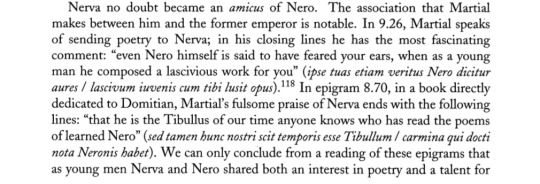

EXCUSE ME??? this is legendary actually. imagine you’re the world’s horniest man. your best friend is some dork senator who happens to like poetry almost as much as you. and the two of you collaborate on writing smut. fucking awesome of them tbh
#nero#nero caesar#emperor nero#nerva#someday I will write this story#in my copious spare time#ancient rome
54 notes
·
View notes
Text
Series of 6 episodes, but the weekly release schedule means the early ones will soon have closed their 1-month window of streaming availability. Final ep out on 06 March. Programme summary [6 eps of 14min each]:
29 years after it was first due to be broadcast, this is the BBC Radio series premiere.
He's 40 and lives at home with his parents. He has the perfect younger brother and his mother is a saint. Life is not easy for Eamon….
Michael Redmond writes and stars in a six-part comedy series. Scheduled to begin in October 1996, BBC Radio 4's new controller James Boyle pulled the whole series shortly before broadcast.
youtube
Also published in book format
youtube
Father Ted [S1E2]: Entertaining Father Stone
2 notes
·
View notes
Text
My sideblog has a sideblog! I didn't want this sideblog to become the Nievazart fan zone, so I made an archive for this artist. Thanks to @irinabless, @twolionss and @silver-whistle for pointing me to where I could find his work.
2 notes
·
View notes
Photo
apaternoster:
Just two Frollo doodles/designs to fill up this crap blog. (it really doesn’t matter what is written there. Even I don’t know. I was drunk then)
From @nievazart's old account, courtesy of @twolionss

#dom claude frollo#Notre-Dame de Paris#Victor Hugo#aleks nievazki#nievazki#nievazart#claude frollo#art#not my art#hunchback of notre dame
16 notes
·
View notes
Text
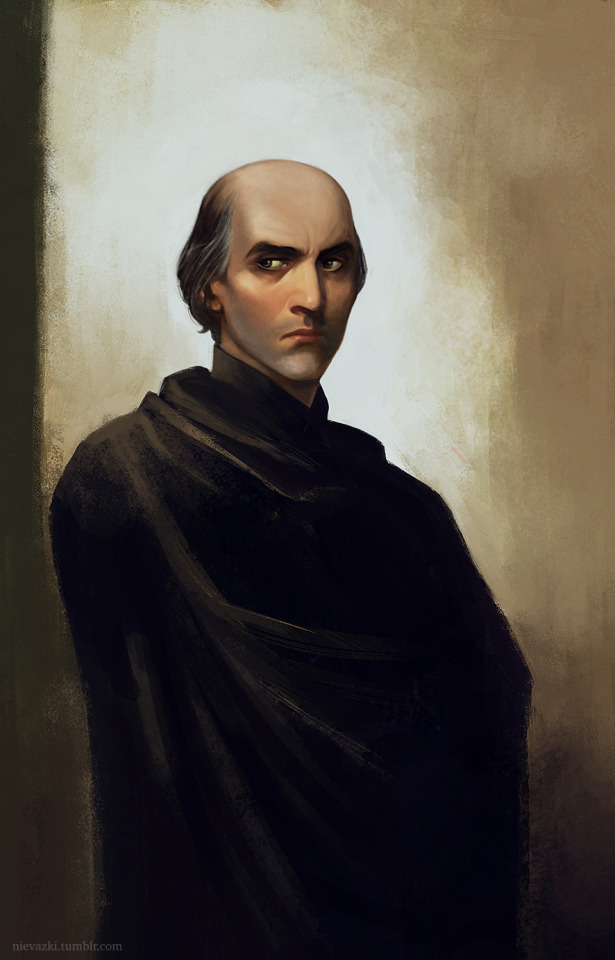
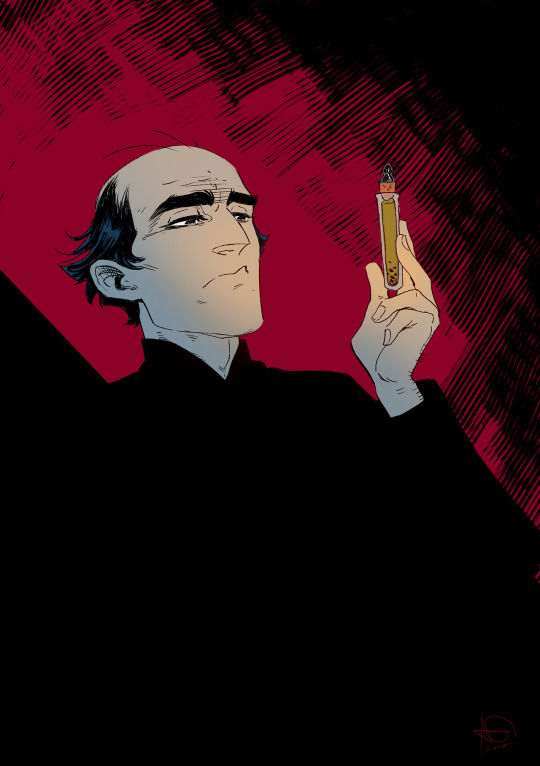
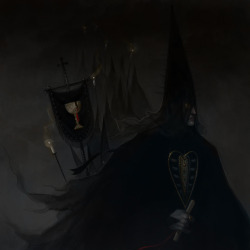
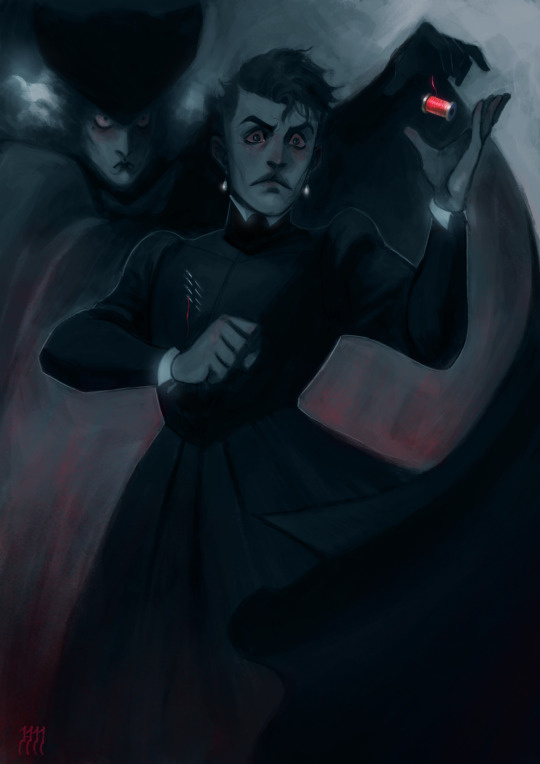
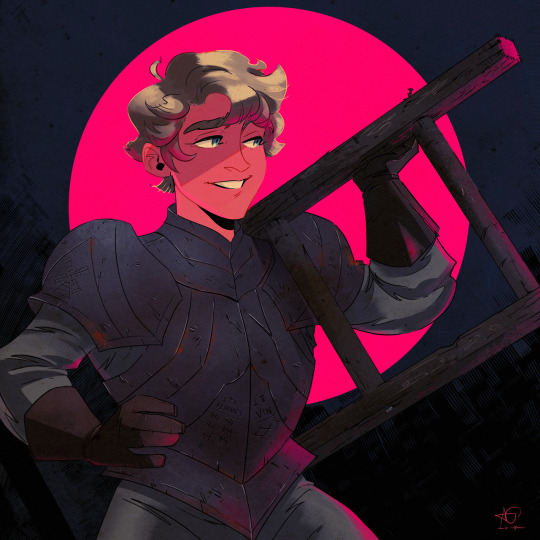
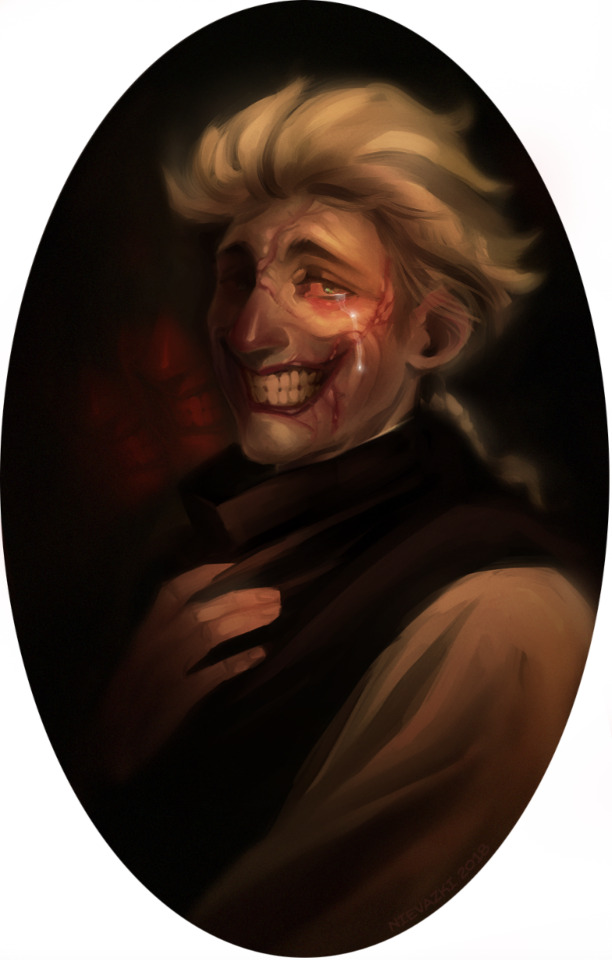
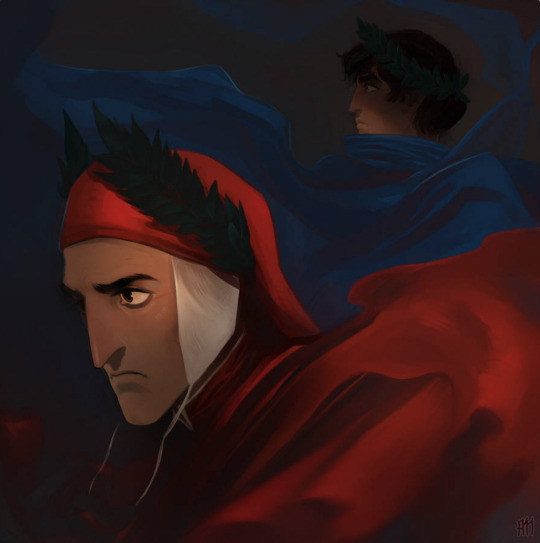
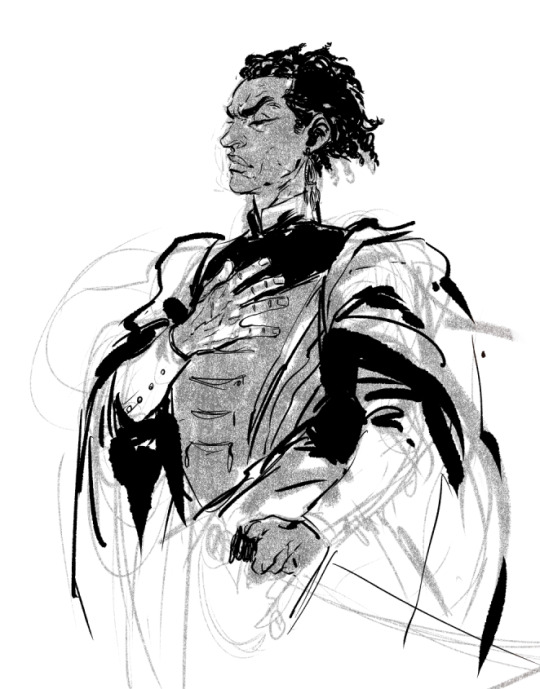
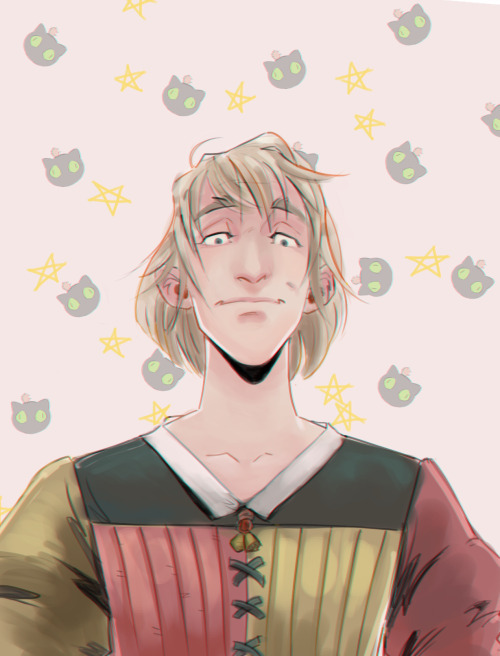
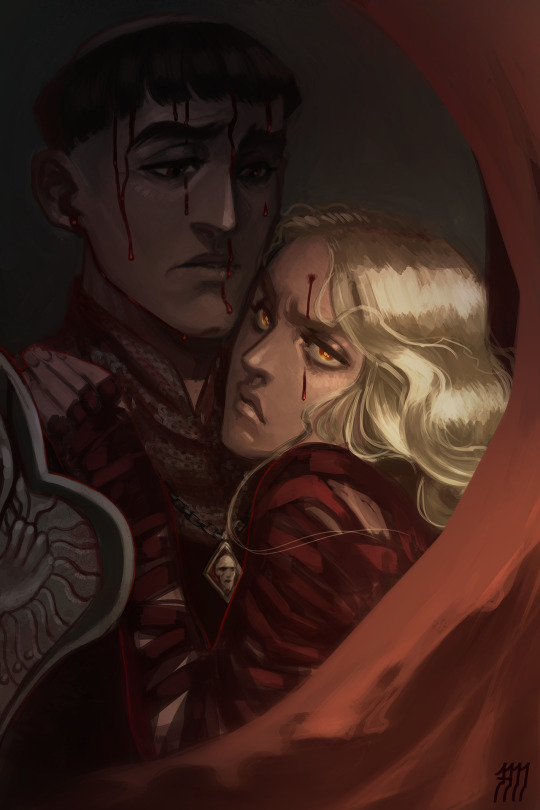
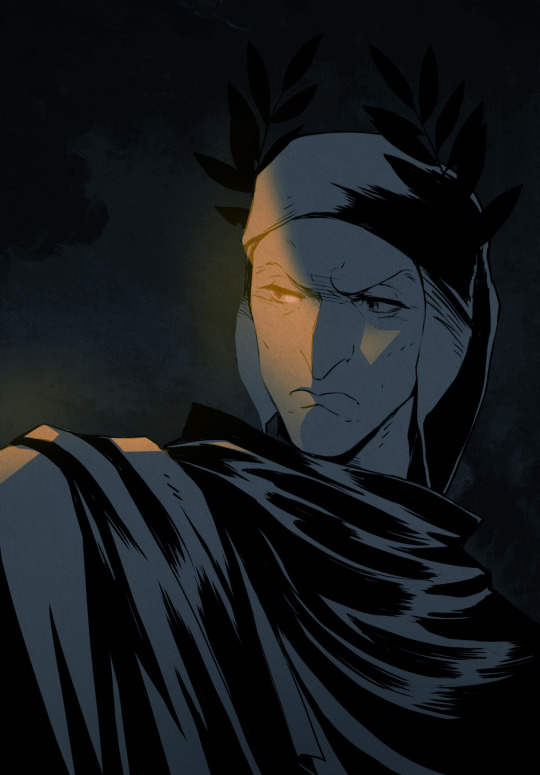
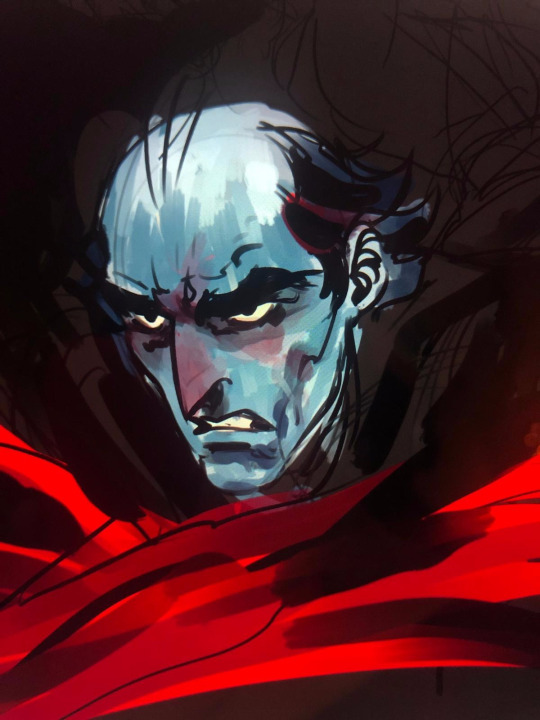
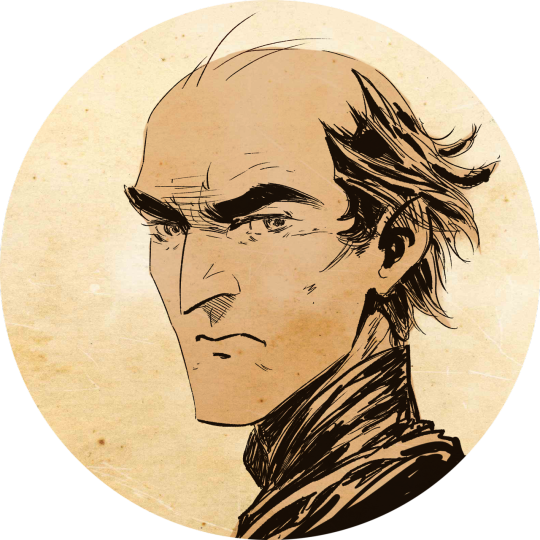

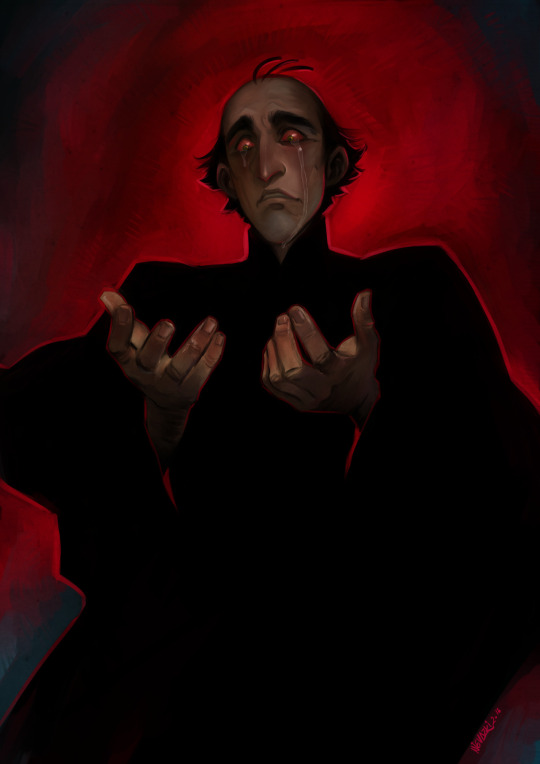
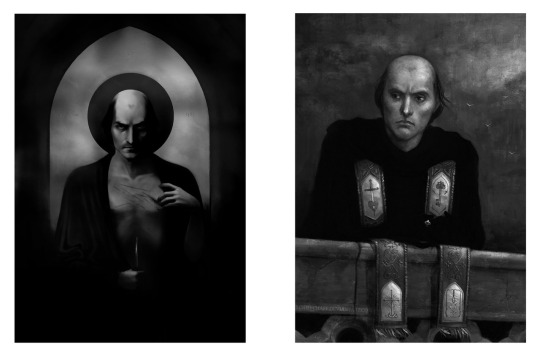
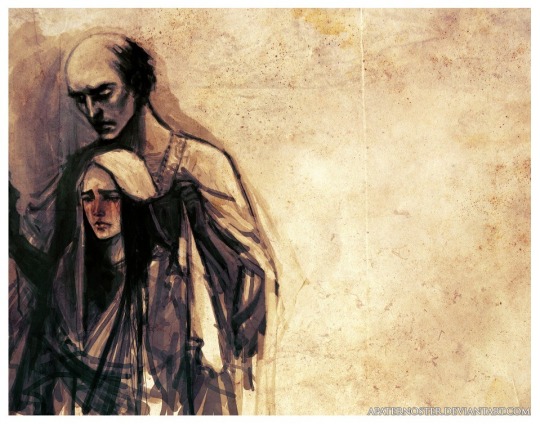
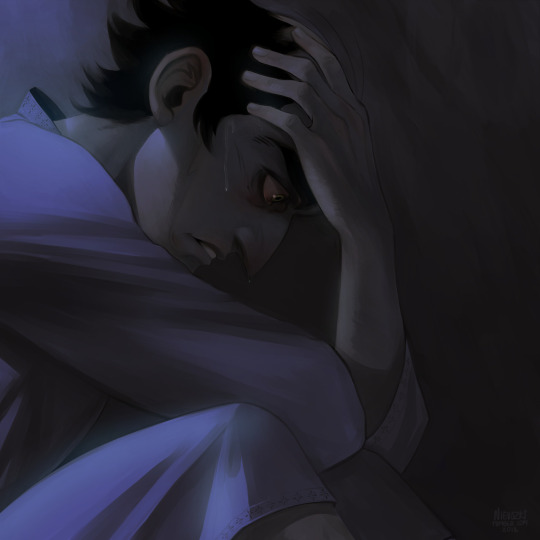
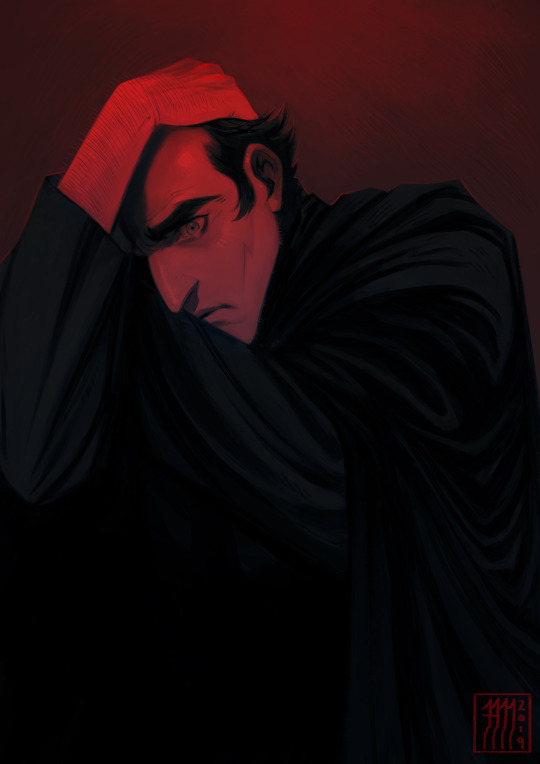

Aleks Nievazki, who lived in Manchester, was an immensely talented artist active from 2016-2020. This is what I could find of his work-- it's beautiful and inspirational. He frequently drew and painted book accurate depictions of Dom Claude Frollo, the antagonist from Victor Hugo's classic novel Notre Dame de Paris, also known as The Hunchback of Notre Dame. He was apparently also fond of drawing Dante, Othello and characters from other Hugo novels like Gwynplaine. He had a sure hand, a confident sense of line, and a deep emotion that infuses all his work.
This is most of what I could find. I'm sorry that I couldn't find anything else.
#aleks nievazki#nievazki#nievazart#dom claude frollo#claude frollo#frollo#victor hugo#notre dame de paris#hunchback of notre dame#othello#dante alighieri#dante#gwynplaine#not my art#art#fanart
74 notes
·
View notes
Text


Actaeon, 1884 - oil on canvas — Briton Riviere (British, 1840-1920)
3K notes
·
View notes
Text



observations
45K notes
·
View notes


